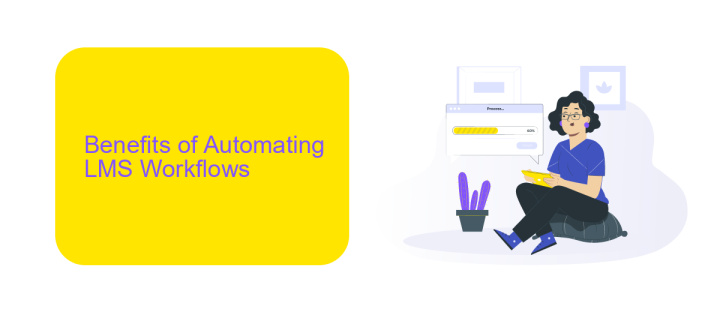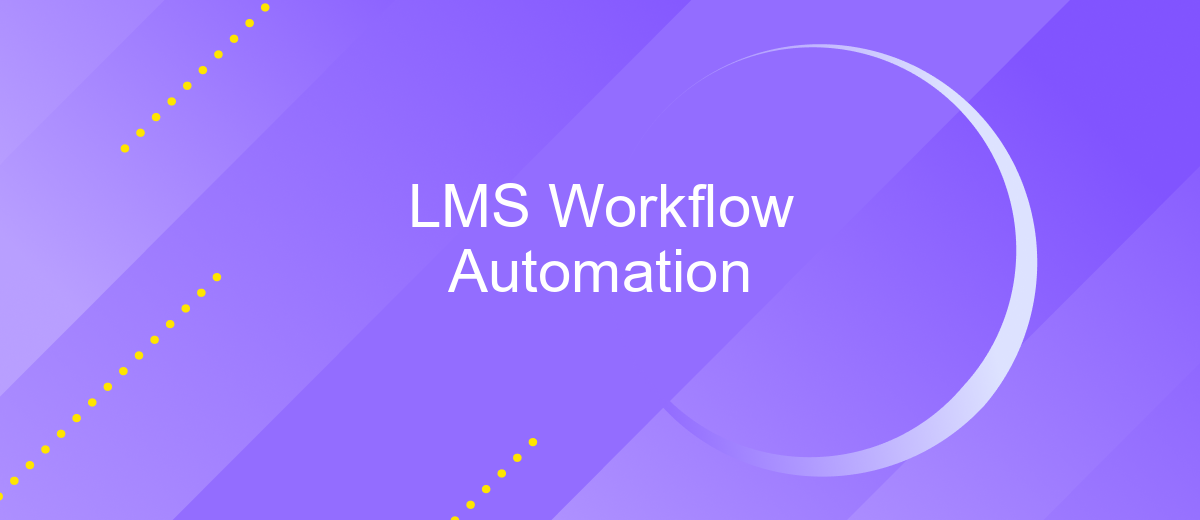LMS Workflow Automation
In today's fast-paced educational landscape, Learning Management Systems (LMS) have become indispensable tools for institutions and organizations. LMS Workflow Automation takes these systems to the next level by streamlining administrative tasks, enhancing user experience, and improving overall efficiency. This article explores the benefits, implementation strategies, and best practices for integrating workflow automation into your LMS to optimize educational processes.
Understanding LMS Workflow Automation
LMS Workflow Automation is a process that streamlines and optimizes the various tasks involved in managing a Learning Management System (LMS). By automating repetitive and time-consuming tasks, educational institutions and organizations can enhance efficiency, reduce errors, and improve the overall learning experience.
- Automated enrollment and user management
- Scheduled content delivery and updates
- Automated grading and feedback
- Integration with other tools and platforms
To set up effective LMS workflow automation, it is essential to integrate various systems and tools seamlessly. Services like ApiX-Drive can facilitate these integrations, allowing for smooth data flow between your LMS and other platforms such as CRM systems, email marketing tools, and more. By leveraging such services, you can ensure that your LMS operates efficiently and that all relevant data is synchronized across your educational ecosystem.
Benefits of Automating LMS Workflows

Automating LMS workflows offers numerous advantages that significantly enhance both administrative efficiency and user experience. By automating routine tasks such as course enrollments, grading, and notifications, educational institutions can save valuable time and resources. This allows educators to focus more on teaching and student engagement rather than administrative duties. Additionally, workflow automation ensures consistency and reduces the risk of human error, thereby improving the overall quality of educational services.
Another significant benefit is the seamless integration with other platforms and tools, which can be facilitated by services like ApiX-Drive. ApiX-Drive enables easy and efficient integration of various applications, allowing for smooth data transfer and synchronization between the LMS and other systems such as CRM, email marketing tools, and more. This interconnected ecosystem not only streamlines processes but also provides a more cohesive and personalized learning experience for students. Overall, automating LMS workflows leads to a more efficient, reliable, and user-friendly educational environment.
Key Components of an Automated LMS Workflow

Automated LMS workflows streamline educational processes, enhancing efficiency and consistency. Key components of an automated LMS workflow include:
- Course Management: Automated course creation, scheduling, and updates ensure that content is always current and accessible to learners.
- User Enrollment: Seamless enrollment processes automatically add or remove users based on predefined criteria, reducing administrative effort.
- Progress Tracking: Automated tracking of learner progress and performance provides real-time insights and facilitates timely interventions.
- Communication: Automated notifications and reminders keep learners informed and engaged, ensuring they stay on track with their learning goals.
- Integration: Tools like ApiX-Drive facilitate seamless integration with other systems, such as CRM and HR software, ensuring data consistency and reducing manual data entry.
These components work together to create a cohesive and efficient learning environment. By leveraging automation, educational institutions and organizations can focus on delivering quality education rather than getting bogged down by administrative tasks.
Best Practices for Implementing LMS Workflow Automation

Implementing LMS workflow automation can significantly enhance the efficiency and effectiveness of your learning management system. To ensure a successful implementation, it is crucial to follow best practices that align with your organization's goals and resources.
First, conduct a thorough assessment of your current workflows and identify areas that can benefit from automation. This will help you prioritize tasks and allocate resources effectively. Next, choose the right tools and platforms that integrate seamlessly with your LMS. For instance, ApiX-Drive can be a valuable service for setting up integrations, ensuring that data flows smoothly between your LMS and other systems.
- Define clear objectives and key performance indicators (KPIs) to measure the success of your automation efforts.
- Involve all stakeholders in the planning process to ensure that the automated workflows meet everyone's needs.
- Test the automated workflows thoroughly before full-scale implementation to identify and resolve any issues.
- Provide comprehensive training and support to ensure that all users are comfortable with the new system.
Regularly review and update your automated workflows to adapt to changing requirements and technologies. Continuous improvement is key to maintaining the efficiency and effectiveness of your LMS workflow automation.
Case Studies and Examples of LMS Workflow Automation
One notable example of LMS workflow automation is seen in a large educational institution that streamlined its course enrollment process. By integrating their LMS with student information systems and payment gateways, they eliminated manual data entry and reduced errors. The automation ensured that once a student enrolled and paid, their information was automatically updated across all relevant platforms, enabling immediate access to course materials. This not only improved operational efficiency but also enhanced the student experience by providing instant access to resources.
Another case involves a corporate training department that utilized ApiX-Drive to connect their LMS with various HR and project management tools. This integration automated the assignment of training modules based on employee roles and project needs. As new employees were onboarded, the system automatically enrolled them in mandatory training sessions. Additionally, progress tracking and reporting were automated, providing managers with real-time insights. This approach significantly reduced administrative overhead and ensured compliance with training requirements.
FAQ
What is LMS Workflow Automation?
How can I integrate my LMS with other tools?
What are the benefits of automating LMS workflows?
Is it difficult to set up LMS Workflow Automation?
Can I customize the automated workflows in my LMS?
Time is the most valuable resource in today's business realities. By eliminating the routine from work processes, you will get more opportunities to implement the most daring plans and ideas. Choose – you can continue to waste time, money and nerves on inefficient solutions, or you can use ApiX-Drive, automating work processes and achieving results with minimal investment of money, effort and human resources.

